Park and summit activating has grown in popularity over the past few years. Indeed, it’s to the point that pileups are not at all uncommon. Here in the U.S., I find that they’re now often the rule instead of the exception. This is exciting, not only because it speaks of the popularity of our hobby, but it gives lots of operators the experience of being on a mini DXpedition!
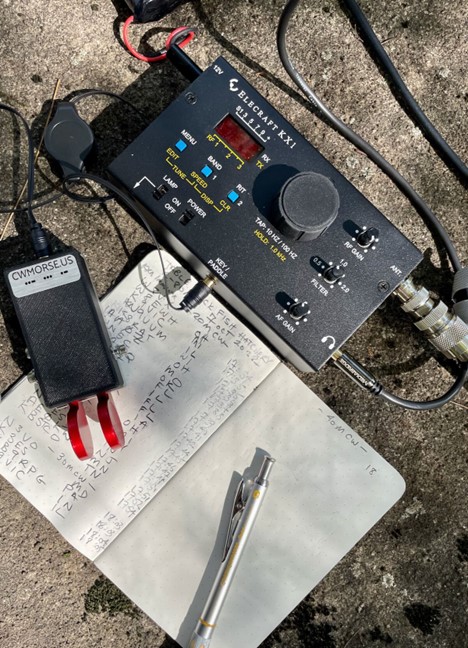
Since Parks On The Air (POTA), World Wildlife Flora and Fauna (WWFF), and Summits On The Air (SOTA) aren’t contest activities and don’t operate like a DXpedition, split-mode operation is not encouraged–it’s certainly not convention. In fact, I’ve never seen a park or summit activator operate split unless they’re operating during a special event or are running a full-on DXpedition on a site that also happens to be a park or summit entity.
And since activators don’t run split to spread out the pileup, it means you’ll need to work within simple simplex bandwidth. So how is an operator to work through a pileup?
In this article, let’s focus on techniques to help both the hunter/chaser who wants to be heard and bust through a pileup and the activator who wants to manage and listen through the pileup.
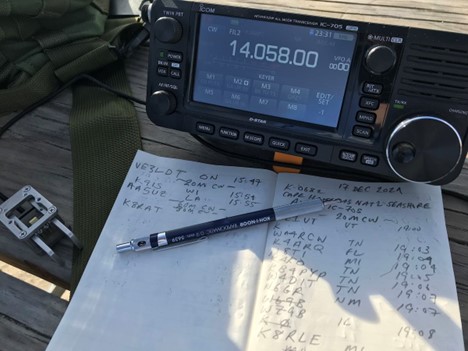
Hunting/Chasing
As a hunter, what’s the single best advice I can give you when facing a pileup? I would suggest not “zero-beating” the activator. Let me explain…
Modern ham radio transceivers are frequency-accurate and thus much less prone to drifting than our vintage and legacy transmitters. For example, when I tune my Yaesu FT-891 to an activator that’s been spotted on 7.063 or 7.226 MHz, my transmitted signal will be exact, right on the money.
Normally that’s a very good thing, because it presents the other operator with an ideal voice or CW signal. However, in a modern pileup situation, this means that the dozens of other hunters/chasers in the pileup are also exactly spot-on the activator’s frequency. From the activator’s side of the radio, everyone calling on frequency in SSB sounds like a garbled muddle of voices. In CW, it sounds like one long, steady, undifferentiated tone.
If you transmit off-frequency in SSB a bit above or a bit below the activator’s frequency–just enough that their audio is still intelligible to you, albeit slightly higher or lower in pitch–you’ll stand out in the pileup on the activator’s side.
Likewise in CW, if you shift slightly above or below the activator’s signal by ≈ 0.05 or ≈ 0.1 kHz, you’ll regain intelligibility. You don’t want to move too far off frequency in case the activator is using a narrow filter with sharp skirts, in which case they won’t hear you at all, but you’ll want to move enough that you’re not working at the same tone as all of the other hunters and chasers in the pileup.
This technique works so effectively that often, as an activator, I can pick an S3 signal out of a pileup of S9 signals! It’s amazing how well changing the tone/pitch of your signal will make you pop out of the pileup.
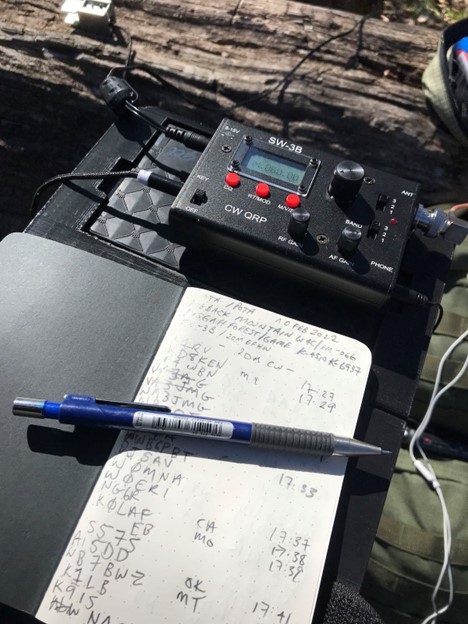
Another technique that can work effectively is to call a little more slowly than other operators in the pileup. Because pileups are fairly exciting, many, if not most, chasers tend to send CW at a faster speed or state their call sign quickly in SSB. By slowing your cadence down just a bit, you can make it more intelligible for the activator. I find this very effective in CW. It’s also effective in SSB, especially if you’re speaking articulately while your gain settings and distance from the mic are optimal for the best transmitted audio.
To be clear: by slowing down, I am not implying that you should “tail-end” the pileup. I don’t personally tail-end in non-split operations. Before I explain why, let’s define the term.
What is tail-ending? Though it can have a couple different meanings, for our purposes here, I am describing when hunters/chasers in a pileup wait to send their entire call until almost everyone else has already done so in the pileup—in that quiet space where the activator is noting a call and preparing to answer someone. While this can be an effective way to be heard by the activator, it could also unintentionally frustrate the activator and others in the pileup. This is because by tail-ending you effectively increase the amount of time it takes for each exchange, and you encourage others to do the same, especially if the activator answers you.
Keep in mind that many activators are operating QRP and must wait for all calls in a pileup to complete before responding since, quite often, their low-power signal lacks the strength to be heard over a chaser/hunter’s signal. This is why I wait for that quiet space before replying.
That said, I think tail-ending is generally acceptable during split operations where the activator’s transmit and listening frequencies are spaced a few kHz apart. During split operations—which, again, are not convention for POTA, SOTA, or WWFF—tail-ending has no effect on others’ ability to hear the activator and it doesn’t slow down the activator.
Of course, one final—and perhaps most obvious—technique that hunters and chasers can use to bust through a pileup is to optimize the signal being sent to the activator. If you have a Yagi or directional antenna, you should point it toward the activator’s park or summit. In addition, you can incrementally increase power if needed. If you only have an omni-directional antenna and no means to increase power, however, the techniques mentioned above will come in very handy!
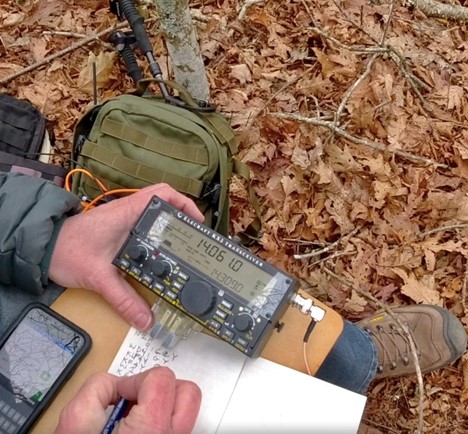
Activating
If you’re new to park and summit activations, pileups can seem a bit intimidating. Sometimes it’s a little overwhelming to be the center of attention, right?
That said, you’ll find that pileups are also exciting and downright fun! The key is to remember that as an activator, you are in charge of the pileup. You set the pace and you set the rules.
In pileup situations, I believe the tendency is to want to narrow your SSB or CW filter in order to help eliminate some of the noise. I personally feel this is not the course to take…well, with one exception which I’ll describe shortly.
How to begin? Try widening your radio’s filter to give “the filter between your ears” a better chance to pick out signals. A seasoned chaser/hunter will move slightly off frequency to be distinguished in the pileup, as I mentioned above. If you have a narrow filter engaged, you might not hear this.
It’s a good idea to have faith in your brain’s ability to “hear through” a pileup, and practice with wide filters. I feel it will make you a better operator in general.
If you like to run a more narrow filter, you can use your radio’s RIT control to move the receiver slightly above and/or slightly below the transmit frequency. This allows your narrow filter to act like a window that allows those stations slightly off-frequency to call through.
One other piece of advice I can offer is to simply trust your brain to do its thing. No need to concentrate too hard in an attempt to make sense of the chaos. It may sound counter-intuitive, but just sit back, relax for a moment, and listen to the entire pileup; your brain will gradually begin to pick out one full or partial call with very little effort. Turns out, we’re quite good at hearing patterns in the noise! Straining too intently to figure it all out can lead to hearing a lot of signals but falling short of the pattern recognition you need. Until you try it, you may not believe it, but do give it a try. This trick works for many operators, myself among them.
Working Regions, DX, QRP, and Other Activators
If you’re activating a particularly desirable or rare site in SSB, it’s possible your pileup may need to be thinned by asking for regional calls one by one. For example, you can simply ask, “All region 4 stations, please,” or “All region 7 stations, please.”
In CW and SSB, I have also asked for “park to park” or “summit to summit” stations only, just to check if there are any in the pileup. Site-to-site contacts can often be difficult to dig out otherwise, in that they’re often running QRP with portable antennas.
In CW, simply send “P2P?” or “S2S?”. If there’s another summit activator out there trying to reach you, they’ll be given a chance to break through.
In SSB, it’s very easy. I simply ask, “Are there any park to park (or summit to summit) stations? If so, please call now.”
I’ll also ask for QRP stations from time to time, and even DX stations.
While we’re on the topic, I have a few times called for random letters in particularly deep pileups. I’ve only done this in CW. I’ll call for an “M,” and listen carefully. If no one replies, I’ll call for a “T.” I would avoid prefixes that are common in your country or region (for example, in Canada, I wouldn’t call for a “V,” or in the UK, avoid calling an “M” or “G”). Note that this is truly an act of desperation, a bit of a random crapshoot, but it can sometimes work in a pinch.
Activator Best Practices
Since you’re in control of the pileup, do have some standards when handling it. Set some rules you can follow and that you believe are fair and sporting.
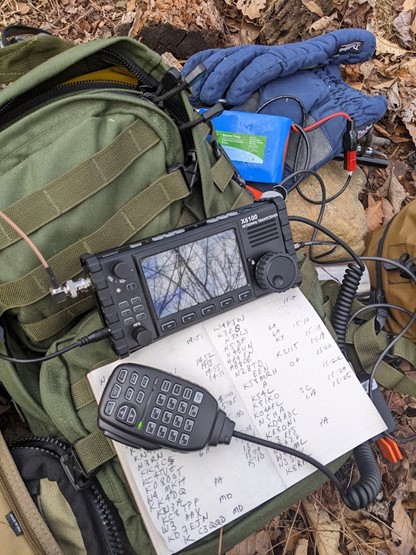
First off, I believe in sticking with the person you call back and giving them a fair amount of time. For example, let’s assume you’re operating in CW and hear “BAC” in a pileup. Call back “BAC?” and wait for a reply. If another station calls you, don’t answer yet; instead, call “BAC?” again. Because QSB (fading) can wipe out a station temporarily, this gives the station another chance to get through to you. I’ll typically call back a station I’ve heard at least three times, and I will only answer that station during that time. If I still don’t hear their response, I’ll send or say, “Sorry!” then call CQ again. If you do otherwise, you send a clear message to others (in an especially unruly pileup) that you will answer callers who interrupt a partial callback, creating a free-for-all and competitive confusion.
I also choose not to answer “tail-enders” who send their entire call in the quiet space of a pileup. As mentioned above, while tail-enders are easy to hear because they’ve waited for the pileup to finish before calling, if you answer a tail-ender, the likelihood is that others will start tail-ending as well. This might effectively increase the length of the time of pileup calls. I heard an operator do this recently during a SOTA activation, and it made the pileup stretch to nearly two pileups, with some international stations calling up to three times a go to be the last tail-ender! It’s a slippery slope.
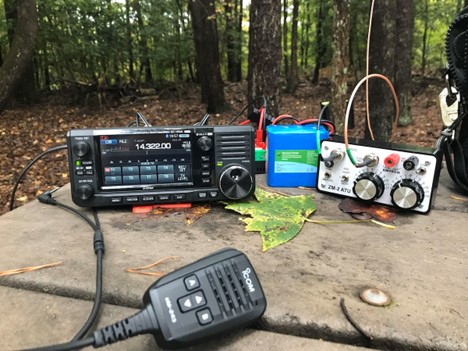
Summary
Most of the park and summit activators I know say they found pileups intimidating until they actually worked one. Yet pileups are exciting, and I can state truthfully that I look forward to them––I think they make me a better listener and a better activator.

Likewise, I enjoy the challenge of busting through a pileup when I’m a hunter or chaser, especially since I almost always operate QRP power (just five watts or less). It’s a lot of fun to beat big gun stations with just a little skill and flea power! Give low power a try, you may enjoy it too.
I hope you’ve found some of these techniques useful. This is by no means a comprehensive list, of course, so I welcome your ideas and suggestions. What skills do you use to work through a pileup? Please share.

